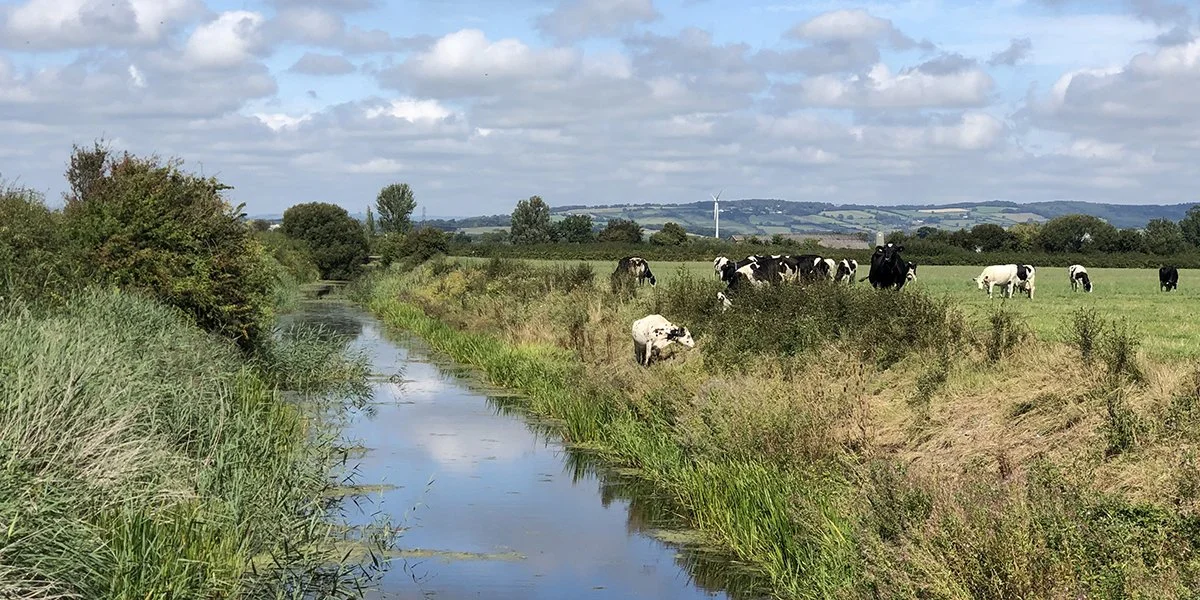Farming on the Gwent Levels
The Gwent Levels is a predominantly farmed landscape in what is otherwise a heavily built-up area of Wales. As a result of the soil quality, favourable climate and water availability, the Levels has high yielding pastures and lush meadows that produce large quantities of dairy and meat. Together, these grasslands represent the largest area of grazing marsh in the UK.
Across the Levels, there are approximately 125 farms, including dairy, beef, sheep and some arable, covering around 6000 hectares.
Although productive, the combination of heavy subsoils and poor drainage make the land challenging to manage and the Levels are generally considered to be low quality agricultural land (Grade 4).
Largely lying at or below sea level, sea defence, flood protection and food production are interlinked and a high priority for the area.
Farming and wildlife
Farming has been the consistent traditional management of the Levels for many centuries. This has allowed the development of unique habitats for wildlife, many of which are associated with the drainage system of grips, ditches and reens: alongside a diverse range of wetland and marginal plants, mammals and birds, over 260 species of wetland insects and other invertebrates have been recorded, some of which are found nowhere else in Wales.
The Levels is also home to one of the last remaining colonies of shrill carder bee, once widespread, but now known at fewer than 20 sites in the UK.
The importance of the Levels for nature is reflected in the number and extent of conservation designations; there are 8 Sites of Special Scientific Interest (SSSI) covering 5,856 hectares.
Cattle grazing along Windmill Reen (C Harris)
Changes in farming
As land management policies have changed, encouraging greater intensification, many of the conditions that produced the unique Levels habitats were no longer present. Over time this has led to a gradual deterioration of habitats and a decline in the abundance of wildlife.
The loss of species and habitats from our landscapes deprives farms of the vital, free ecosystem services that food production requires, such as healthy soils, clean water, natural pest control and pollination, and resilience to the effects of climate change.
At the same time, an over-reliance on inputs, such as fertilisers, pesticides and animal feed, is damaging farm businesses, particularly as profit margins have been squeezed by rising input costs following the war in Ukraine and the global energy crisis.
Restoring the balance between farming and nature is key to ensuring the longterm survival and profitability of the farming sector, and protecting our wildlife.
Follow the leader (C Harris)
Level Advice advisory booklet (PDF 6.7MB)




